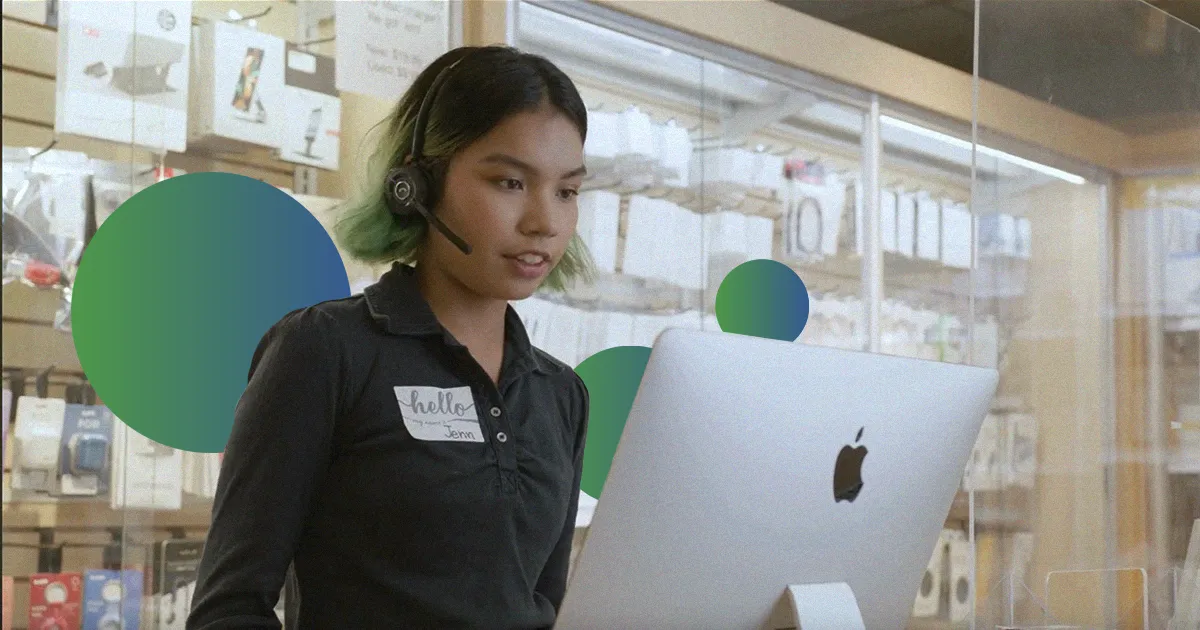The trick, however, is ensuring all of your shop assistants know or have access to accurate, up-to-date information. And with many stores suffering from high staff turnover or regular product updates and changes, it can be hard to offer regular training sessions, leading to gaps in employee knowledge.
Luckily, staff training doesn’t always have to happen in a training room. Let’s take a closer look at the different methods and tools you can use to keep your customer-facing staff updated and informed.
Perhaps the trickiest type of learning opportunity to schedule, training sessions held away from the shop floor allow employees to learn in a distraction-free environment. There are three main types:
Usually the first type of training that comes to mind, in-person training sessions allow employees to network, team build and learn in an interactive, yet structured, way. They can be planned as a one-off event or as recurring sessions and are an opportunity for people to connect across departments, units or even regions.
Nevertheless, they come with a high cost and quite a few notable drawbacks. First, you need to have a dedicated trainer, whether internal or external, with the time to study and deliver the material. Often they are only available 9 to 5, which means that employees who are only able to work nights and weekends risk being excluded.
Then there is the cost of finding cover and, if it’s held off-site, travel. Ideally, the training will happen during a quiet time in store, but even during the quieter periods you still need enough store associates to cover the floor. So to keep the business running, there are always some staff members who will miss out.
Holding virtual learning sessions through a video conference or webinar platform can be a good alternative to in-person sessions, but other than reducing travel and hosting costs, many of the same scheduling and accessibility problems remain. Sessions have to occur when the trainer is ready, which isn’t convenient for everyone, and workers have to be off the shop floor to participate.
Another potential issue is the lack of computers or other devices. Deskless employees will need access to hot spot computers or borrow ones used by back office staff, which could disrupt business operations. Digital meetings also don’t include opportunities for small talk, making them less attractive as a team-building initiative.
Online modules are a popular alternative to in-person and virtual sessions. They are cost-effective, flexible, as they can be done at any time, and allow employees to work at their own pace. However, with most online training programs, employees watch a video, read a document and fill out a short quiz at the end. That’s it. There’s no discussion, no interaction and no chance to meet and network with colleagues. And while it may work in the short term — in that it initially gets the needed information to employees — often the information doesn’t stick.
And just like with virtual sessions, frontline workers have the added challenge of getting to a computer. Retailers can offer training sessions that can be accessed from a mobile or at home, but very few frontline employees want to use their own devices, let alone their own time, to complete it. Add in the potential illegality of requiring staff to use their own devices or work off the clock and it can quickly become a logistical and legal nightmare.
On the other hand, encouraging employees to learn on the job gets rid of quite a few barriers, but it can be ineffective and stressful if approached in an unstructured way. Experience is a brutal teacher — employees will learn the lesson, but it may cost a retailer customers and potentially even staff.
With a structured approach and smart communication tools, there are ways to ensure your store associates can learn while on the shop floor.
Watching, listening and learning from colleagues who are product experts, is a great way to learn all the ins and outs. These experts have knowledge that only experience gives and learning by their side is much more memorable than watching an informational video. But if it gets busy and there are loads of customers looking for help, training time is suddenly lost, and if the learner is a new recruit, they’re likely to get pulled into a customer interaction they aren’t yet prepared for.
It can be hard to schedule the same people together consistently due to different shift patterns and vacations. But with retail headset systems, like x‑hoppers, you can improve this approach by connecting coworkers across the shop floor, allowing them to reach out to the entire team if they have a question or need assistance. This way, employees aren’t tied to just one colleague, enabling them to shadow the entire team from anywhere in the store, even when they are working on other tasks.
Regardless of how many training sessions you offer, it’s rare that everyone will remember everything. Offering knowledge on demand, allows employees to access the information they need, when they need it, regardless of the time of day or number of people on shift.
One way to approach it is through micro-learning lessons available on mobile devices or through online portals. However, if a customer has a question, it’s not exactly easy to browse through a course list to find the answer you’re looking for.
Additionally, since it pulls information straight from a store’s chosen database, all you need to do is update information in one place and notify staff on the shared broadcast channel that it is available to roll out product updates across teams, saving you time and ensuring that customers can get the correct information when they need it.
The key to producing product experts is making sure your employees have access to quality training. This can mean a variety of different types of training to suit different programs and agendas, but specifically for product knowledge, consider having an option that is always on and easy to access so that your employees are never without the information they need to confidently provide quality customer service.



